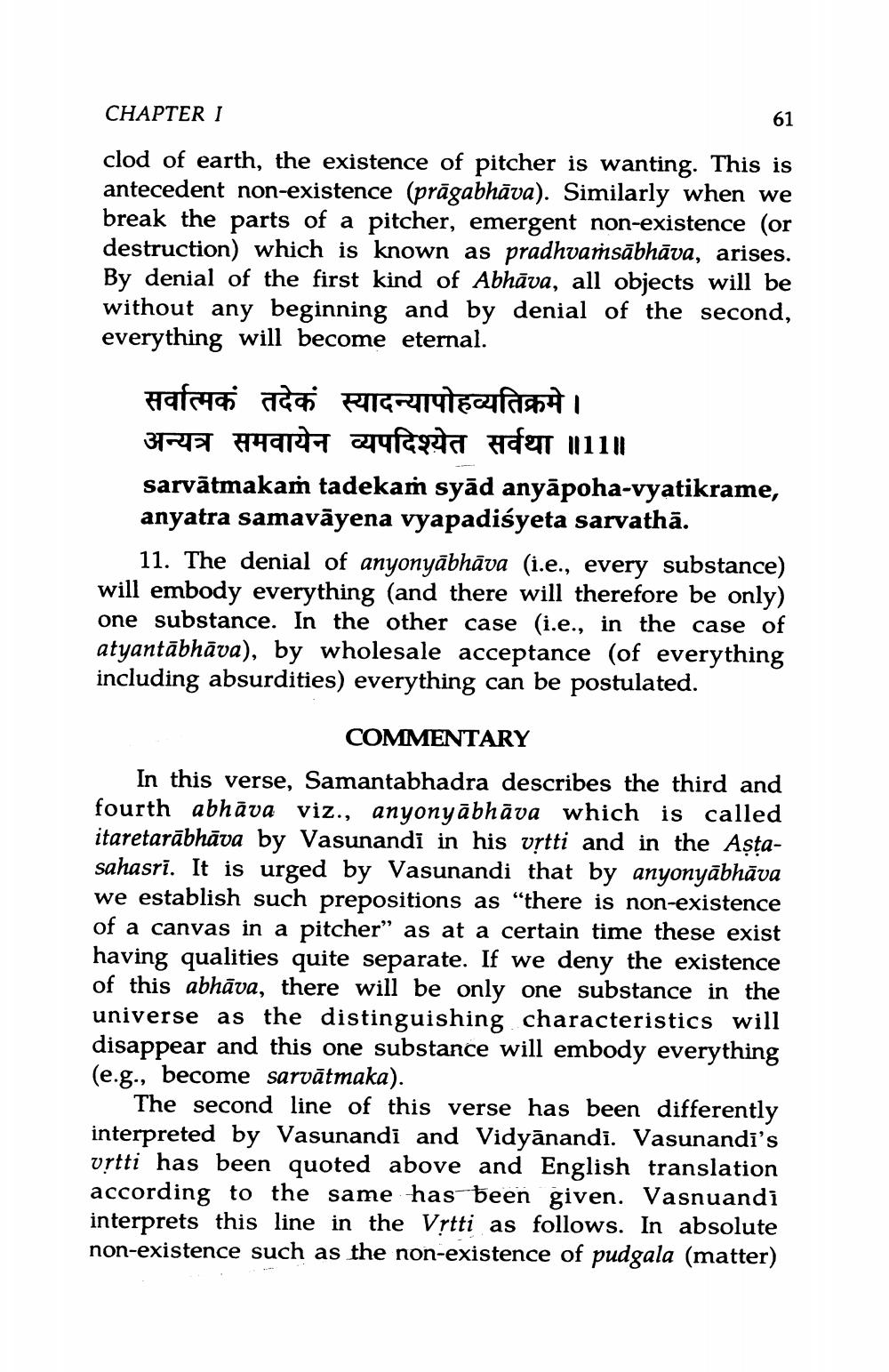________________
CHAPTER I
clod of earth, the existence of pitcher is wanting. This is antecedent non-existence (prāgabhāva). Similarly when we break the parts of a pitcher, emergent non-existence (or destruction) which is known as pradhvaṁsābhāva, arises. By denial of the first kind of Abhāva, all objects will be without any beginning and by denial of the second, everything will become eternal.
सर्वात्मकं तदेकं स्यादन्यापोहव्यतिक्रमे ।
अन्यत्र समवायेन व्यपदिश्येत सर्वथा ॥11॥
61
sarvātmakam tadekaṁ syād anyāpoha-vyatikrame, anyatra samavāyena vyapadiśyeta sarvathā.
11. The denial of anyonyābhāva (i.e., every substance) will embody everything (and there will therefore be only) one substance. In the other case (i.e., in the case of atyantābhāva), by wholesale acceptance (of everything including absurdities) everything can be postulated.
COMMENTARY
In this verse, Samantabhadra describes the third and fourth abhāva viz., anyonyābhāva which is called itaretarābhāva by Vasunandi in his vṛtti and in the Aṣṭasahasri. It is urged by Vasunandi that by anyonyābhāva we establish such prepositions as "there is non-existence of a canvas in a pitcher" as at a certain time these exist having qualities quite separate. If we deny the existence of this abhāva, there will be only one substance in the universe as the distinguishing characteristics will disappear and this one substance will embody everything (e.g., become sarvātmaka).
The second line of this verse has been differently interpreted by Vasunandi and Vidyānandi. Vasunandi's vrtti has been quoted above and English translation according to the same has been given. Vasnuandi interprets this line in the Vrtti as follows. In absolute non-existence such as the non-existence of pudgala (matter)




